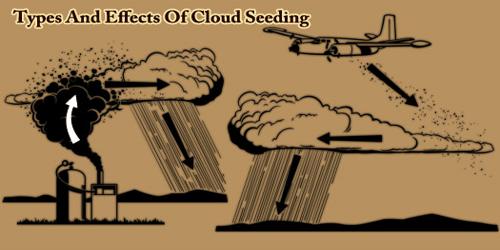Urban Gardening, also known as urban agriculture or urban farming is where people practice cultivation, mainly of food, in and around urban areas. Basically, it is the traditional cultivation of crops, but in urban centers. Urban gardening can also involve animal husbandry, aquaculture, agroforestry, urban beekeeping, and horticulture. These activities occur in peri-urban areas as well, and peri-urban agriculture may have different characteristics.
With urbanization and since more and more people would like to do their farming where they are, urban gardening is considerably being taken up and has been a successful alternative a shift from the traditional thinking that the cultivation of crops can only be done in the rural areas.
Urban agriculture can reflect varying levels of economic and social development. It may be a social movement for sustainable communities, where organic growers, “foodies,” and “locavores” form social networks founded on a shared ethos of nature and community holism. These networks can evolve when receiving formal institutional support, becoming integrated into local town planning as a “transition town” movement for sustainable urban development. For others, food security, nutrition, and income generation are key motivations for the practice. In either case, more direct access to fresh vegetables, fruits, and meat products through urban agriculture can improve food security and food safety.
History –
The history of urban agriculture dates back to about 3,500 B.C., according to the American Society of Landscape Architects’ (ASLA) blog. At a symposium of historians and landscape architects, they discussed how Mesopotamian farmers began setting aside plots in growing cities.
In the same part of the world about 1,500 years later, the semi-desert towns of Persia offered one of the earliest pieces archeological evidence for urban food production. Thanks to urban aqueducts, mountain water was brought to oases to produce food using a great deal of urban waste within the settlement.
Another notable point in history is from the Aztec civilization. They used “chinampa,” or floating islands, for farming just outside of cities on lakes, K. Michelle Glowa noted in “The Wiley Blackwell Encyclopedia of Urban and Regional Studies.” The island became an important part of the Aztecs’ growth when they needed to support their population, but conquering more land wasn’t feasible.
The idea of supplemental food production beyond rural farming operations and distant imports is not new. It has been used during war and depression times when food shortage issues arose, as well as during times of relative abundance. Allotment gardens came up in Germany in the early 19th century as a response to poverty and food insecurity.
In 1893, citizens of a depression-struck Detroit were asked to use any vacant lots to grow vegetables. They were nicknamed Pingree’s Potato Patches after the mayor, Hazen S. Pingree, who came up with the idea. He intended for these gardens to produce income, food supply, and even boost independence during times of hardship. Victory gardens sprouted during WWI and WWII and were fruit, vegetable, and herb gardens in US, Canada, and UK. This effort was undertaken by citizens to reduce pressure on food production that was to support the war effort.
From 1880 to the early 1900s, allotment gardens became a popular way for European cities like London, Paris, and Stockholm to help the urban poor become self-provisioning. In peri-urban areas, or land that immediately surrounds a city, poor families were given land to garden. This idea wasn’t unique to those European cities, however. Glowa mentioned how several urban planners, designers, and theorist connected that notion to urban farming. For instance, at the turn of the century, Ebenezer Howard’s garden city movement included gardens and larger agricultural fields within walking distance of town. Also, in the 1930s, Frank Lloyd Wright’s Broadacre City advocated for agricultural uses on each home’s one-acre allotment.
Western governments strongly supported urban agriculture during the two world wars. Agriculture was developed on land plots started during the Great Depression, and propaganda campaigns insisted that citizens should “dig on for victory” in victory or war gardens during the war. At their height, victory gardens rivaled the production of commercial farms, according to the authors of the “Horticultural Reviews” article. Support for them went as high up as possible. In 1917, Woodrow Wilson said that “food will win the war,” and during the Second World War, Eleanor Roosevelt created a victory garden at the White House.
Urban agriculture then experienced a decline. After the war, community gardens became rarer as populations were redistributed, cities were reorganized, and most notably, suburbs expanded.
During World War I and World War II, most supplies and food were prioritized for the war effort, leaving many at home to deal with scarcity. In order to boost food supplies, many countries promoted “Victory Gardens” or “war gardens”, or gardens cultivated by citizens on private and public land. Besides alleviating the strain on the public food supply, it also was seen as a way to boost morale and patriotism. In the US, Victory Gardens were responsible for about 41% of all consumed vegetable produce in the year 1943.
Community gardening in most communities are open to the public and provide space for citizens to cultivate plants for food or recreation. A community gardening program that is well-established is Seattle’s P-Patch. The grassroots permaculture movement has been hugely influential in the renaissance of urban agriculture throughout the world. The Severn Project in Bristol was started in 2010 for £2500 and provides 34 tons of produce per year, employing people from disadvantaged backgrounds.
Today, Japan is at the forefront of innovation in urban gardening and farming. Within the urban sprawl, it’s not uncommon to find rooftop paddy fields and bee farms, vegetable gardens under the Tokyo metro, and even farms with animals taking up the entire floor of a skyscraper. Overall, urban farming in Japan has grown by 36% in the last 10 years.
Now, urban planners, policy-focused organizations, and local governments take it seriously and recognize the environmental, economic, and social benefits urban agriculture offers. As the National Conference of State Legislatures noted in 2017, there have been several examples of state legislation for urban agriculture.
Information Sources:
















